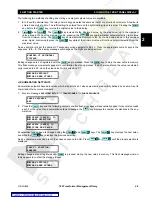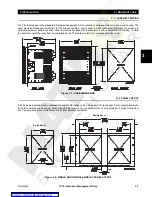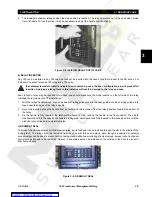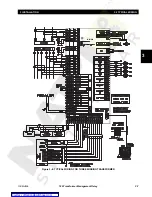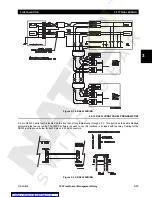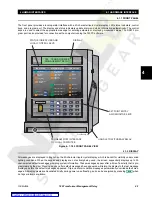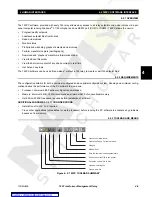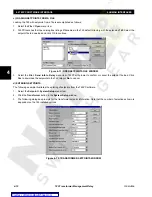
GE Multilin
745 Transformer Management Relay
3-11
3 INSTALLATION
3.2 TYPICAL WIRING
3
3.2.11 RTD DRIVER/SENSOR
Terminals B10 (RTD Hot), B11 (RTD Comp) and B12 (RTD Ret) provide for the connection of various types of RTD devices.
This connection may be made using two or three wires to the RTD. Terminal B10 is connected internally to a 5 mA current
source for energizing the RTD. Terminal B11 is connected internally to a 5 mA current source for the purpose of cancelling
out the resistance of the wires connecting the RTD to the 745. Terminal B12 is the return path for the two current sources.
In the three-wire connection scheme, the connection from terminal B11 to B12 is made at the RTD. The three-wire connec-
tion scheme compensates for the resistance of the wiring between the 745 and the RTD.
In the two-wire connection scheme, the connection from terminal B11 to B12 is made at the terminal block on the rear of the
745. This connection must not be omitted. The two-wire connection scheme does not compensate for the resistance of the
wiring between the 745 and the RTD.
3.2.12 OUTPUT RELAYS
Eight output relays are provided with the 745. Output Relays 2 through 5 have Form A contacts while Output Relays 6 to 8
and the Self-Test relay have Form C contacts. Since Output Relays 2 to 5 are intended for operating a breaker trip coil, the
Form A contacts have higher current ratings than the Form C contacts. Note that the operating mode of the Self-Test relay
is fixed, while the other relays can be programmed by the user via the FlexLogic™ feature.
3.2.13 SOLID STATE TRIP OUTPUT
A high-speed solid state (SCR) output is also provided. This output is intended for applications where it is necessary to key
a communications channel.
3.2.14 ANALOG OUTPUTS
The 745 provides 7 analog output channels whose full scale range can be set to one of the following ranges: 0 to 1 mA; 0
to 5 mA; 0 to 10 mA; 0 to 20 mA; and 4 to 20 mA. Each analog output channel can be programmed to represent one of the
parameters measured by the relay. For details, see Section 5.4.11: Analog Outputs on page 5–37.
As shown in the typical wiring diagram, the analog output signals originate from Terminals A6 to A12 and share A5 as a
common return. Output signals are internally isolated and allow connection to devices which sit at a different ground poten-
tial. Each analog output terminal is clamped to within 36 V of ground. To minimize the effects of noise, external connections
should be made with shielded cable and only one end of the shield should be grounded.
If a voltage output is required, a burden resistor must be connected at the input of the external measuring device. Ignoring
the input impedance, the burden resistance is:
(EQ 3.1)
If a 5 V full scale output is required with a 0 to 1 mA output channel,
R
LOAD
= 5 V / 0.001 A = 5 K
Ω
. Similarly, for a 0 to 5 mA
channel this resistor would be 1 K
Ω
; for a 0 to 10 mA channel, this resistor would be 500
Ω
; and for a 4 to 20 mA channel
this resistor would be 250
Ω
.
Figure 3–12: ANALOG OUTPUT CONNECTION
R
LOAD
V
FULL
-
SCALE
I
MAX
----------------------------------
=

